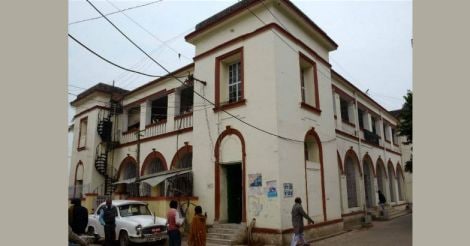New Delhi: The Netherlands has appealed to Bihar Chief Minister Nitish Kumar to spare the demolition of Patna Collectorate, one of the last surviving signatures of Dutch history of Bihar's capital, and list the centuries-old structures under the state archaeology department.
Ambassador of the Netherlands to India Alphonsus Stoelinga in a letter to Kumar also suggested that adaptive reusage of these old buildings, on the banks of Ganga, could be found.
"I came across reports about the possibility of this shared built heritage of India and the Netherlands being demolished anytime.
"I sincerely believe that this built heritage depicting the Indo-Dutch history can be restored and alternate uses can be planned. I am writing this letter to appeal to you to list the complex of buildings as per the norms of the state archaeological department," said Stoelinga.
Highlighting the vulnerabilities of unprotected heritage buildings in the city, heritage body INTACH and members of civil society, including eminent historians, architects and former judges had on April 6 also urged the Bihar chief minister to spare its dismantling and restore it.
Patna Collectorate alongside Patna College's main administration building and the remains of the opium godown in Gulzarbagh, comprise the last remnants of Dutch history of Patna.
The government's move has upset experts and commoners alike and the civil society in its appeal to Kumar had also asked to "restore it to its original glory and reuse the site as a tourist attraction".
The Ambassador in his letter also cited the book 'Patna: A Monumental History' brought out in 2008 by the state government's Department of Art, Culture and Youth, where Patna Collectorate and Patna College are listed among the heritage buildings of the capital city.
A senior official at the Dutch Embassy here said, "Bihar, especially, cities of Patna and Chhapra have intrinsic links to the Dutch past, and the riverine trade and history of that era. Places like Patna Collectorate could become focal points in storytelling of shared history between the two countries."
"The buildings once restored could also serve as a backdrop for celebrating the local culture of Patna and Bihar on the banks of Ganga. That way, it will attract both foreign tourists and engage the local people with their own history," the official told PTI.
The Dutch came to India in early 17th century with the establishment of the Dutch East India Company which traded in various Indian cities like Surat, Patna, Chinsurah (Bengal) and Pulicat (Coromandel region of Tamil Nadu).
Patna was one of the major trading centres for opium and saltpetre and the Dutch built factories and godowns there on the banks of Ganga as the river played a major role in trade operation until the advent of railways in 19th century.
The Dutch government in the letter also offered to NIT- Patna and Bihar government to work on a collaborative project on capacity-building programmes on the theme of "adaptive reusage" of heritage buildings.
"May I also take this opportunity to invite the architecture department of the National Institute of Technology, Patna, for working out a collaborative effort with my Embassy and Dutch counterparts in making a capacity building programme in conservation and adaptive reusage of heritage buildings in collaboration with the state Department of Culture using the Dutch (era) Patna College as a reference point," the letter said.
The Dutch Embassy official said such collaborative programmes can help widen avenues on both sides, and enhance better understanding of "our shared heritage" as well.
"A Dutch-era building, being used as a post office in Surat had also faced demolition about 10 years ago, but then eventually the decision was reconsidered and it survived," he said.
The Dutch government in 2014 had worked on a series of collaborative projects seeking to link shared history with tourism in partnership with Victoria Memorial Hall and Presidency University and West Bengal Tourism.
West Bengal's Chinsurah is steeped in Dutch history and remnants of the bygone era can still be seen in the town by the banks of Hooghly.
"We brought out a volume - 'A Documentation of the Dutch Heritage in Chinsurah' and a booklet 'Chinsurah - The Dutch Heritage seeking to rekindle our mutual old links and celebrate the legacy and promote tourism there," he said.
The government of the Netherlands had also made attempts to salvage its links with Pulicat, a town in Tamil Nadu, where remains of the old Dutch era can still be seen.
The embassy official said that one of the reasons the Dutch history has remained "not so accessible" to people is because of the "language barrier".
"Most of the records are in Dutch language and we have tried to get some of them translated into English," he said.
A richly-illustrated book 'De VOC in India', originally in Dutch language and authored by researcher Bauke van der Pol was brought out a few years ago. In 2014, its English version 'The Dutch East India Company in India' was released.
VOC or Vereenigde Oostindische Compagnie, commonly known as the Dutch East India Company, was originally established as a chartered company in early 1602 and is said to be the first multinational corporation of the world and the first company to issue stock.
The VOC monogramme can still be seen in buildings and other places and artefacts in various cities having Dutch connection. The Commissioner's Bungalow in Chinsurah carries the inscription 'VOC 1687' on its grand staircase.
(With agency inputs)
























